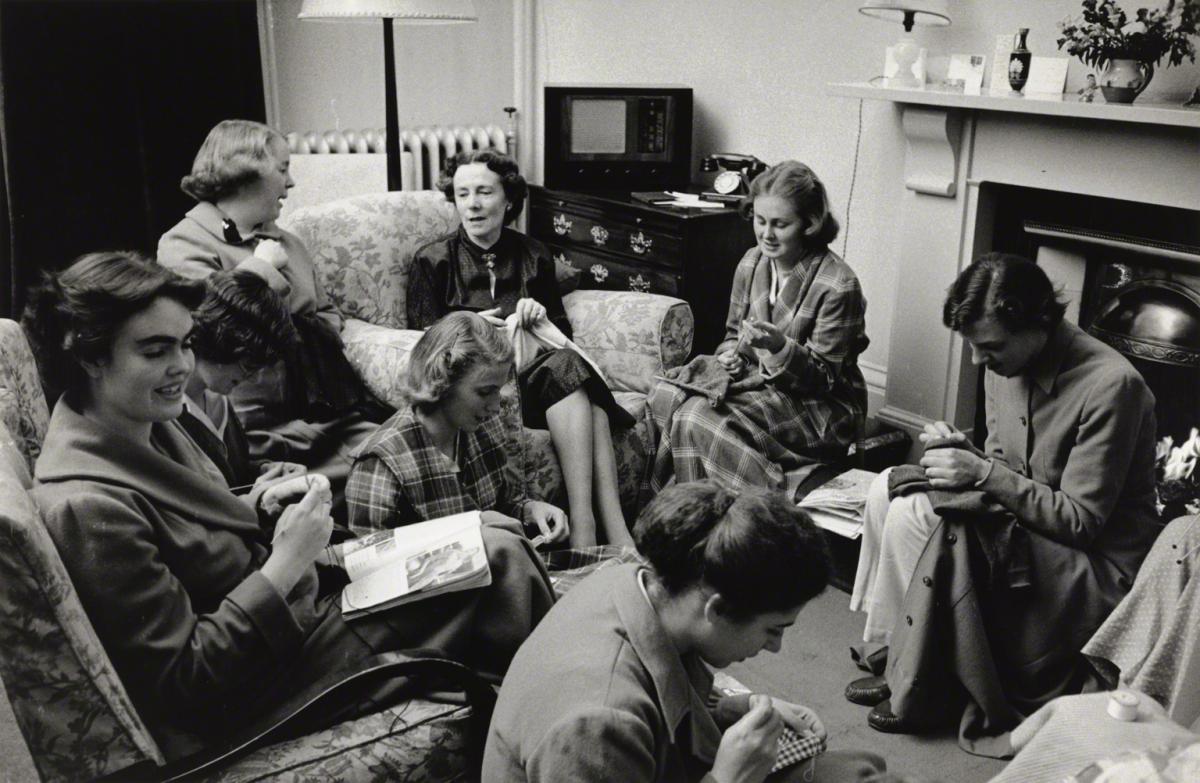Untitled (Woman’s Sewing Group)
Esther Bubley ( c. 1950s )

In 1943, Standard Oil Company of New Jersey organized a photo-documentation project to chronicle the role of oil in American society. For the project, the photographer Esther Bubley conducted a bus tour of America, her second; she had taken her first such trip while working in a similar capacity for the Office of War Information. Bubley’s work took her to the C.L. Hardy Plantation outside Maury, North Carolina.[1] In the 1940s, Clarence L. Hardy owned the world’s largest tobacco plantation, 12,000 acres stretching over two North Carolina counties, home to more than 150 tenant families.
C.L. Hardy Tobacco Plantation, Maury, NC (1946) depicts two boys on a mule-drawn cart crossing a wooden plank bridge over an irrigation creek. Bubley’s command of light creates a captivating image. The light hits the tops of the tobacco stalks and is broken by the shadows cast by the leaves, giving the impression that the plants are waving in the wind. Bubley uses shadows to direct the viewer’s attention, framing the boys between the brush on either side of the path. The boys stand in opposition to one another. The taller, muscular one stands with his back straight and holds the reins of the mule, which creates a line between himself and the animal. The boy on the right bends his body as he entertains a childish interest. The taller boy’s bare back and sun hat add years that his small frame does not support. Through her photography, Bubley has created a portrait of rural Southern life in the 1940s, encapsulating the postwar economy’s effect on young people. Although it is difficult to discern the ethnicity of the two figures, Bubley’s photographs often capture the dynamic of race in rural America.
Text by Rebecca Shipman, as part of the Seeing U.S. Research Project
[1] Delinda Buie, interview by Rebecca Shipman, March 6, 2023, Standard Oil (New Jersey) Company Collection, University of Louisville, University Archive.